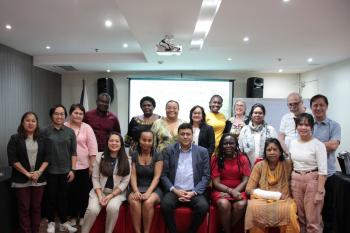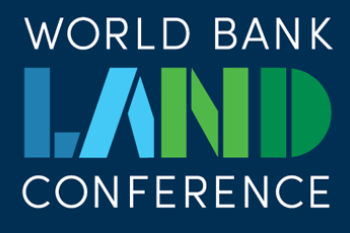
New dashboard tracks Land and the Sustainable Developing Goals
The Land Portal Foundation and Global Land Tool Network (GLTN), with support from the Omidyar Network, have launched a dashboard focused on Land and Sustainable Development Goals (SDGs) to make information related to the land indicators in the SDGs widely available. Throughout the world, land provides a primary source of income, food security, cultural identity, and shelter. It also serves as a fundamental asset for the economic empowerment of the poor and provides a safety net in times of hardship.
The dashboard covers indicators 1.4.2 on land tenure security including perception of tenure rights, 2.3.1 and 2.3.2 on smallholder farmers, what they earn and how much they produce, 2.4.1 on agriculture area, 5.a.1 on ownership and share of land rights of women, 5.a.2 on legal frameworks for women's land rights, 11.1.1, 11.3.1 and 11.7.1 relating to sustainable urban tenure and open spaces and 15.1.1, 15.1.2 and 15.3.1 relating to forest areas, biodiversity and degraded lands, respectively.
The dashboard includes:
- A timeline featuring important decisions that have been made for land indicators
- The latest news and blogs on land and the SDGs.
- A table outlining the Tier Status of each indicator.
- The context and essential information related to each indicator, including the method for measuring the indicator, a description of why the indicator is important and who is working on monitoring the indicator.
- Selected Land Portal data visualizations, such as FAO’s Gender and Land Rights data as well as LandMark’s and RRI’s data on the amount of legally recognized indigenous and community land for Indicator 1.4.2.
- Blogs, news, events, debates and library resources relating specifically to each indicator.
- Key dates for the specific indicators, the custodian agency responsible for the indicator, official partners of the indicator as identified by the UN and indicator-specific links.
When dealing with land tenure issues within the SDGs, the land community is showing commitment to improve livelihoods for billions of people in the world who cannot afford legal documentation to protect their basic economic and social rights, among which access and enjoyment of their land rights. The SDGs is offering us a unique chance to positively change the pattern and perception of tenure security, building on the continuum of land rights - Oumar Sylla, Head of the Land and GLTN Unit at UN-Habitat.
Land indicators in the SGDs
In September 2015, world leaders unanimously approved the Sustainable Development Goals (SDGs), a comprehensive set of 17 goals and 169 targets, referred together as the 2030 agenda. The Inter-agency and Expert Group on SDG Indicators (IAEG-SDGs), composed of United Nations Member States, developed global indicator framework to track progress towards the achievement of the SDGs, which were adopted by the UN ECOSOC in March 2016.
Among the indicators proposed by the IAEG-SDGs are numerous indicators related to land, advocated for and supported by various global land community actors including the Global Donor Working Group on Land, members of the Global Land Indicators Initiative, FAO, UN SDSN and others. Indicators in the SDGs monitoring framework have been categorized and assigned a ‘tier status,’ meaning that the indicator does not yet have a methodology for tracking it (Tier 3), has a methodology but no regular data (Tier 2), or has both a methodology and regular data (Tier 1). The development of a methodology for measuring respective indicators is assigned by IAEG-SDGs to various UN agencies, in collaboration with other stakeholders as “custodian agencies”. From November 11-14 in Manama, Bahrain, the IAEG-SDGs will review progress made in the development of Tier 3 indicators, including indicator 1.4.2 for measuring tenure security including perception, and indicator 5.a.2 on countries’ legal provisions that secure women’s land rights among others.
In concert with this initiative, the Land Portal Foundation, the Global Land Tool Network (GLTN) and the UN Sustainable Development Solutions Network’s Thematic Network on Good Governance of Extractive and Land Resources additionally launched a Blog Series on Land and the Sustainable Development Goals (SDGs). The first blog in the series is titled Land and the SDGs by world-renowned expert Professor Jeffrey Sachs, Chairman of the Advisory Board of Columbia Center for Sustainable Investment (CCSI), University Professor at Columbia University, and Director of the UN Sustainable Development Solutions Network.
According to Professor Sachs, “Land rights determine social status, women’s empowerment, and the survival or destruction of cultures, especially of indigenous peoples.”
Stay tuned each week for a new blog related to land and the SDGs. Sign up on the Land Portal to join the community and have access to the latest blogs and information.


